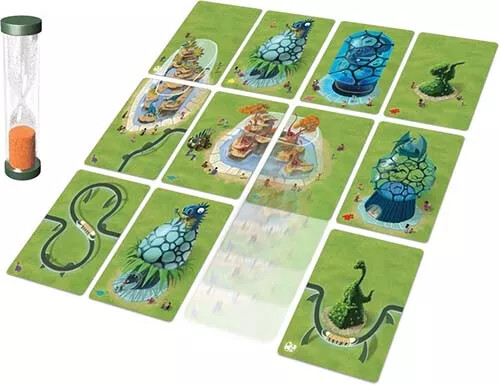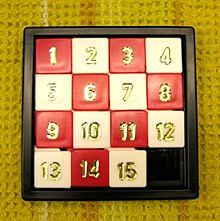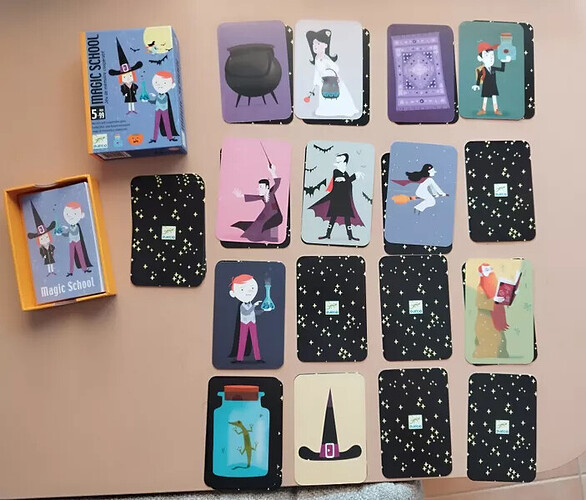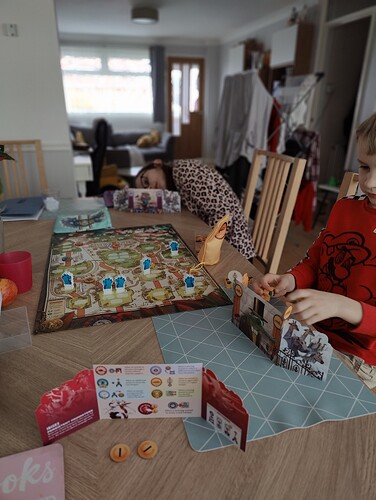Recently, I participated in a local no-ship Math Trade. The meetup and exchange location this time around was my preferred Friendly Local Overpriced Game Store (FLOGS), who graciously hosted the event. Attached to said game store is a boardgame cafe, and a shared gaming space situated between that connects to both stores.
The schedule of the day with kids provided a few challenges to meet the drop-off and pick-up requirements for the trade, so I ended up going straight from my 5 year-old’s soccer game (in near-freezing, nearly-raining conditions) to drop off at the store before the deadline, with said 5yo in tow. Then we drove back to the house and promptly ate lunch as a family, followed by some play time and then finally after my partner got our youngest down for a nap, me and the oldest (5) headed out again to pick up. Unfortunately, yet again, everyone in the trade had already left rather than hanging around – everyone except for a very nice couple (the same couple that helped me last time get my trades to the exchange a few months ago, and who live about a mile away from me), who stayed behind to watch my trades until I got there; I was completely unaware of this and was not able to properly thank them before they had left (I had assumed that since they were sitting with my trades that they were helping coordinate the trade; only after they had left did I realize they looked familiar). So, anyway, I’ll talk about trades in another thread, but while we were there, me and the oldest (5, nearly 6) played a few games from the selection available in the Cafe’s library.
While I want to mention that we played this, we only sort of played it. It’s a component-gimmick game and the components were worn out, so the gimmick didn’t gimmick. 5 really wanted to play the game, mostly due to the toy factor (which is rather clever), so we improvised some rules, but it was easier for me to stick to the improvised rules than it was for the 5-year old; so she “won” but that copy of the game is junk and should probably be tossed (or at least given away for prototyping materials to local boardgame designers? Is that a thing? It’s a very clever conceit, if it worked).
This is a game we’ve played a few times when visiting the boardgame cafe. It’s a roll-and-move game bedecked in pinks and purples and clouds and rainbows. There are 0 decisions to be made (other than, perhaps, in a multiplayer game when you have to decide who to give a gift?)
Or, maybe not; my daughter very much enjoyed this game and was really enthusiastic while rolling the dice and picking up her crystals; and she won both games we played of it… coincidence? I’ll leave that for you, the reader, to decide.
This was a bit of a stretch, but 5 picked it up and thought it looked cool. When I read a bit on the back and told her it was a game where you build a dinosaur zoo, she got giddy with excitement (she’s clearly never seen Jurassic Park… obviously, she’s 5!)
It’s actually pretty clever. It’s extremely light and I would categorize it as an annoying-to-teach filler if played with a regular hobbyist gaming group; but it would be a very clever family game to bring to your next family get together – we’ll see why in a minute.
So, you start by selecting a number of “characters” and shuffling in those characters’ cards in with the “neutral” cards to create a deck. Then you deal out 11 cards to each player. They choose 2 in secret and pass the rest along (a la Sushi Go). You repeat, taking 2 more and passing along; once you take a card, you cannot change your mind (though you could probably houserule that sort of thing if you cared to). When the last card comes around, you’ll keep it. You then layout the cards randomly into a 4-by-3 grid with a “missing” card in the bottom-right. Something along the lines of:

credit: @jorgecachoh via BGG
Once everyone has this laid out in front of them, you flip a timer (unless you’re house-ruling the game with a 5-year-old, and then you had already put the sand timer back into the box because 5 was just playing with it instead of listening how to play, and I’m going to have to help her anyway, so we don’t need to time anything here, move along)
Everyone has one metric sandtimer’s worth of time to puzzle their board around, a la these things

Then, after you help your 5 year old slide her puzzle and then do yours, or if playing with only adults who are not 5, after the timer expires, you total up your score – 4 points per tramway connection, 6 points per 2-piece enclosure that’s (properly) assembled, 1 point per topiary, and then for each attraction (the single-card glass dome features), you get 2 points per truck that is orthogonally adjacent. That’s it; that’s all. Game done. It worked surprisingly well with 5; I showed her how to slide the cards around and kind of talked about how she might want to put some of her cards together (this one above that one, these two next to each other, etc). I hadn’t really internalized some of the scoring details at the time, so we both just made the park that we thought looked coolest and then I worked through scoring them afterwards. We both won because we had fun puzzling with our dinosaur parks, but the game says I “won” 19-15 which felt like a hollow victory because I had misinterpreted a scoring criteria that impacted 5 more than me… oh well. We were smiling the entire time we were playing.
Also: if you want to play with non-hobbyist-gamers, there’s a variant in the rulebook that says to just draft your “own” cards – the cards that have your “characters” icon in the bottom corner; just do that as much as you can when given the choice and it suggests there’ll be a good chance you’ll have an interesting zoo to slide around. 5 instinctively did this because she chose the purple “character” and wanted all of the cards with purple in the corner.
This was a little box sitting next to Mesozooic and I grabbed it on a whim because I wasn’t sure if the 8+ age recommendation on Mesozooic was going to pan out. This ended up being the last game we were able to play before we had to head home to help mommy wrangle the two younger sisters.
This game is so clever and perfect for kids. It immediately went onto my radar as something I’ll be asking Santa to find to put into a stocking this coming Christmas.
It’s a matching game. You play it using an, at first, imaginary 4-by-4 grid. It’s played cooperatively or, rather, “by committee” as I tend to classify these games. Players take turns drawing a card and showing it to everyone. On the first turn, you’ll just draw the card, show it to everyone, and then place it face down in the top-left of the grid. The next player will draw a card and show it to everyone; everyone now has to discuss whether that card “matches” a face-down card in the grid; if it does, you place it face-up on top of its match (without confirming whether you’re correct or not); if not, you place it in the next position face-down. Play continues like this; each turn a card is drawn and you decide whether it is the “match” to an existing card of if it should be placed face-down in a new position in the grid. Eventually, you’ll realize that you mistakenly matched one card to the wrong face-down position, and you might have to make up for it by placing a card on a spot you know isn’t a match, but hopefully is the proper location of the matching card for your other mistake.
When the game is over and all 16 positions in the grid have 1 card face down and one card face up on top of it, you go through the pairs and check how many matches you got right. The number of matches determines your score and how well you did. We got 10 matches out of a total of 16; though we had a bit of a learning curve at the beginning and had to “retcon” a bit… which is hard to do without considering that “cheating” in a memory game?
Anyway; the game’s title is “Magic School” so I thought it would be Harry Potter-esque; it wasn’t. It was black-pointy-hat witches and Frankenstein’s Monster and vampire with purple pinstriped pants and a cape. Accidentally, very Halloween appropriate, really.
credit: @cisnenegro via BGG
And the cards are not just duplicate art; half of the cards are a character holding an object; and the other half of the cards are the object; this is the particularly clever bit that I really appreciated. It made it difficult, even for me, allegedly an adult, to remember or necessarily focus correctly on the right object (we didn’t realize, for example, that there was more than one book and that we needed to have remembered what the book looked like).
This is not a “gamer’s game” but it is a “gamer’s kids’ game” for sure. I really want to put it in front of my 4 year old, who I think would also enjoy it.
EDIT: we also played a game of Trouble, which I didn’t record (much like I didn’t record Pool Party). She assured me that she remembered how to play because she had gotten a Paw Patrol version of Trouble a few months back (I don’t recall the occasion, but it’s true… we have that somewhere around here…) But as we played on, I skimmed the rules and realized that the rules I remembered from childhood (very vague to start with) and the rules she was giving me that she learned from when her mom (my partner) played with her were both lacking in accuracy. We retconned what we could, but I had already taken advantage of the “bad” rules so much that it just wasn’t a fair competition… and she got bored near the end and wanted to quit before I officially won (she may be a future 18xx player, after all!)






